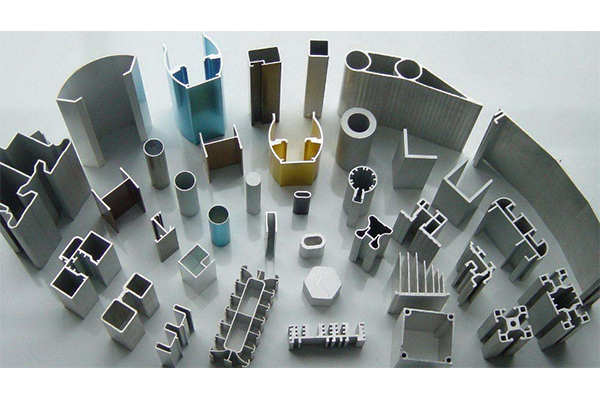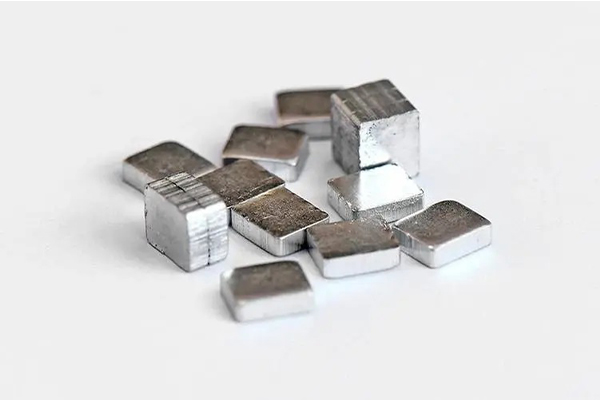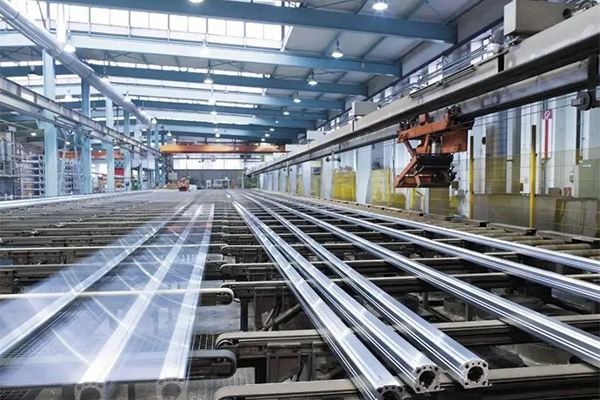Aluminium is a metallic element with the symbol Al and atomic number 13.Its monomer is a silvery-white light metal. It is ductile. Commodities are often made into rods, sheets, foils, powders, ribbons and wires. In the humid air can form a layer of oxidized film to prevent metal corrosion. Aluminum powder can burn violently when heated in air and emit dazzling white flame. Easily soluble in dilute sulfuric acid, nitric acid, hydrochloric acid, sodium hydroxide and potassium hydroxide solution, insoluble in water. Relative density 2.70, melting point 660℃. Boiling point 2327℃. The content of aluminum in the earth's crust is second only to oxygen and silicon, ranking third, is the most abundant metal elements in the earth's crust. Aviation, construction, automotive three important industrial development, the requirements of material properties with aluminum and its alloys of unique properties, which is greatly conducive to the production and application of this new metal aluminum. The applications are extremely wide.

Aluminum (Al)
1, used as a steelmaking deoxidation nitrogen fixing agent, grain refinement, inhibit the aging of mild steel, improve the toughness of steel at low temperatures, especially to reduce the brittle transition temperature of steel;
2, improve the antioxidant performance of steel. Had more research on the antioxidant properties of iron and aluminum alloys: 4% AI can change the structure of the oxide skin, adding 6% Al can make the steel below 980C with antioxidant properties. When aluminum and chromium with and with, its antioxidant performance has greater improvement. For example, containing iron 50% a 55%, chromium 30% -35%, aluminum 10% -15% of the alloy, at a high temperature of 1400C, still has a fairly good oxidation resistance. Because of this role of aluminum, in recent years, often aluminum as an alloying element added to heat-resistant steel.
3, in addition, aluminum can also improve the corrosion resistance to hydrogen sulfide and V2O5.
Disadvantages: ① deoxygenation, such as too much aluminum, will promote the tendency of graphitization of steel; ② when the aluminum content is high. Its high-temperature strength and toughness is low.

Elemental aluminum is a very important metal element which has many uses. In our daily life, elemental aluminum is widely used in various fields, such as construction, transportation, electronic packaging and so on. Below, we will introduce the uses of elemental aluminum in detail
Elemental aluminum has a wide range of applications in the field of construction. Aluminum alloy is a lightweight and high-strength material, which can be used to make building materials, such as window frames, door frames, wall panels and so on. The advantages of aluminum alloy are that it is not easy to rust, not easy to corrode, easy to process and install, so it is widely used in the construction field
Aluminum elements also have important applications in the field of transportation. Aluminum alloy can be used to manufacture automobiles . Trains, airplanes and other transportation parts, such as wheels, frames, wings and so on. Aluminum alloy's light weight, high strength, corrosion resistance and other characteristics, so that the performance of transportation has been improved, but also reduces energy consumption and pollution.

Aluminum in the earth's crust, second only to oxygen and silicon, the content of 8.3%, ranking third, is the most abundant metal elements in the earth's crust, and its reserves in the metal in the second place. Among the metal varieties, it is the second largest metal after iron and steel. It exists mainly as aluminosilicate ores, as well as bauxite and cryolite. Aluminum oxide is a white amorphous powder, it has a variety of variants, the most familiar is α-Al2O3 and β-Al2O3. nature exists corundum that belongs to α-Al2O3, its hardness is second only to diamond, high melting point, acid and alkali resistance, commonly used to make some bearings, manufacturing abrasives, refractory materials. Such as corundum crucible, can withstand a high temperature of 1800 ℃. Al2O3 due to the inclusion of different impurities and have a variety of colors. For example, containing traces of Cr (III) is red, known as ruby; contains Fe (II), Fe (III) or Ti (IV) is called sapphire.
The peripheral electronic configuration of the aluminum atom is 3s²3p¹, which often behaves as a +3 oxidation state in compounds. Aluminum atoms with empty 3d orbitals can form stable complexes with coordination numbers of 6 or 4 with electron pair givers. If the aluminum atom loses two 3s electrons and one 3p electron at the same time, a trivalent aluminum ion (Al³⁺) is generated; if it loses one 3s electron and one 3p electron, a divalent aluminum ion (Al²⁺) is generated; if it loses one 3p electron, a monovalent aluminum ion is generated (Al⁺ ), the low-valent aluminum ion is usually unstable at low temperatures.
The crystal lattice of aluminum is of the face-centered cubic type. Aluminum atoms (aluminum ions) are located at the nodes of the lattice and at the centers of the faces, which corresponds to four aluminum atoms in each lattice.
Aluminum is a silvery-white light metal. It is ductile. Commodities are often made into columns, rods, sheets, foils, powders, ribbons and filaments. Melting point 660℃. Boiling point 2327℃. Relative density 2.70, the density of aluminum liquid is 2.303 g/cm³. Modulus of elasticity 70Gpa, Poisson's ratio of 0.33. Aluminum's electrical conductivity is about 60% of copper, if the unit mass, aluminum's electrical conductivity exceeds that of copper, and often replaces copper in long-distance transmission. Aluminum is widely used for its light weight, good electrical and thermal conductivity, high reflectivity, and resistance to oxidation. Aluminum for everyday utensils is often called 'steel fine' or 'steel seed'.The coefficient of thermal expansion of Al at (room temperature) 25°C is 0.0000236mm/°C or 23.6ppm-k-1.

The uses of a substance depend greatly on the nature of the substance. Aluminum has an extremely wide range of uses because of its many excellent properties.
Aluminum and aluminum alloys are one of the most cost-effective and widely used materials today. The world production of aluminum has exceeded that of copper since 1956, and has always been the first non-ferrous metal. The current production and use of aluminum (calculated by ton) is second only to steel, becoming the second largest metal used by mankind; and aluminum is very rich in resources, according to preliminary calculations, aluminum deposits reserves account for about 8% of the earth's crust constitutes more than material.
Aluminum's light weight and corrosion resistance are two outstanding features of its performance.
1, the density of aluminum is very small, only 2.7g/cm³, although it is relatively soft, but can be made into a variety of aluminum alloys, such as duralumin, super duralumin, rust-resistant aluminum, cast aluminum and so on. These aluminum alloys are widely used in aircraft, automobiles, trains, ships and other manufacturing industries. In addition, cosmic rockets, space shuttles, artificial satellites also use a large number of aluminum and its aluminum alloy. For example, a supersonic aircraft consists of about 70% aluminum and its aluminum alloy. Ship construction is also a large number of aluminum, a large passenger ship with the amount of aluminum often up to several thousand tons.
2, the conductivity of aluminum is second only to silver, copper and gold, although its conductivity is only 2/3 of copper, but the density is only 1/3 of copper, so transport the same amount of electricity, the quality of aluminum wire is only half of the copper wire. The oxide film on the surface of aluminum not only has the ability to resist corrosion, but also has a certain insulating properties, so aluminum in the electrical manufacturing industry, wire and cable industry and radio industry has a wide range of uses.
3, aluminum is a good conductor of heat, its thermal conductivity is 3 times greater than iron, industry can use aluminum to manufacture a variety of heat exchangers, heat dissipation materials and cookware.
4, aluminum has good ductility (its ductility is second only to gold and silver), in 100 ℃ ~ 150 ℃ can be made of aluminum foil thinner than 0.01mm. These foils are widely used for packaging cigarettes, candy, etc., can also be made of aluminum wire, aluminum bars, and can roll a variety of aluminum products.
5, the surface of aluminum because of the dense oxide protective film, not easy to be corroded, often used to manufacture chemical reactors, medical equipment, refrigeration devices, petroleum refining equipment, oil and gas pipelines, and so on.
6, aluminum powder has a silver-white luster (general metal in powder form when the color is mostly black), often used to do paint, commonly known as silver powder, silver paint, to protect iron products from corrosion, and beautiful.
7, aluminum combustion in oxygen can release a lot of heat and dazzling light, commonly used in the manufacture of explosive mixtures, such as ammonium-aluminum explosives (from ammonium nitrate, charcoal powder, aluminum powder, smoke and black and other combustible organic mixture), combustion mixtures (such as bombs and artillery shells made of aluminum thermite can be used to attack difficult to fire targets or tanks, artillery, etc.) and lighting mixtures (such as barium nitrate 68%, 28% of the powdered aluminum, shellac 4%).
8, aluminum thermite is often used to melt refractory metals and welding rails. Aluminum is also used as a deoxidizer in the steelmaking process. Aluminum powder and graphite, titanium dioxide (or other high melting point metal oxides) according to a certain ratio of uniformly mixed, coated in metal, calcined at high temperatures and made of high-temperature-resistant metal ceramics, which has important applications in rocket and missile technology.
7, aluminum reflective properties of light is also very good, reflecting ultraviolet rays than silver, the purer the aluminum, the better its reflective ability, so it is often used to manufacture high-quality reflectors, such as solar cooker reflectors.
8, aluminum has sound-absorbing properties, acoustics is also better, so the broadcasting room, modern large-scale construction of indoor ceilings, etc. also use aluminum. Low-temperature resistance, aluminum at low temperatures, but its strength increases without brittleness, so it is ideal for low-temperature device materials, such as cold storage, freezer, Antarctic snow vehicle production units.
9, aluminum-air battery, as the name suggests, is a new type of battery with aluminum and air as the battery material. It's a non-polluting, long-lasting, stable and reliable power source, and is a very friendly battery to the environment. The structure of the battery and the use of raw materials can be changed according to different practical environments and requirements, has a great adaptability, can be used for both land and deep sea, can be used as a power battery, but also as a long-life, high-capacity signal batteries!
